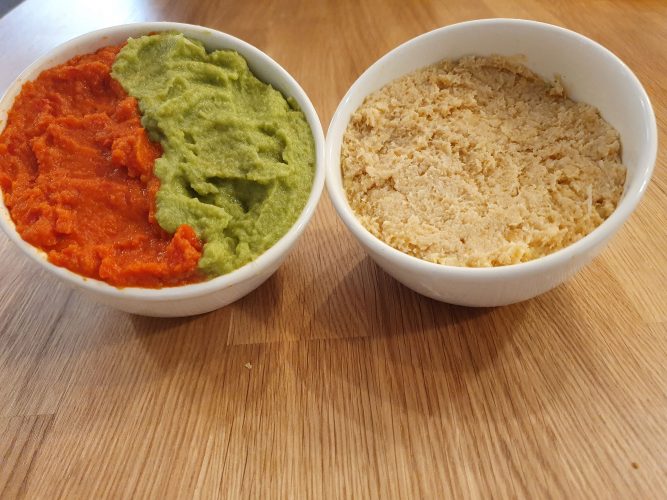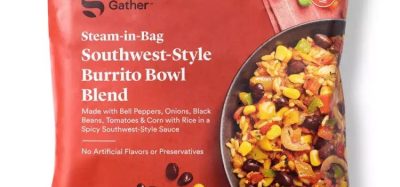New food solutions for cancer patients: a consumer-centred approach
Posted: 30 April 2021 | Alvar Gràcia, Bartłomiej Mielniczuk, Dominika Maison, Itziar Tueros, Stella Lignou | 1 comment
The Oncofood project revealed some expectations of cancer patients regarding new food solutions.


Cancer is among the leading causes of death worldwide. According to the Global Cancer Observatory, in 2018 there were 18.1 million new cases and 9.5 million cancer-related deaths worldwide.1
One of the main challenges for cancer patients undergoing treatment is preventing or mitigating malnutrition. Cancer-related malnutrition is highly prevalent in patients undergoing cancer treatment, varying from eight to 84 percent, dependent on cancer site and stage.2 However, not all patients suffer from malnutrition, but most experience a reduction in their daily food intake as they often have adverse side effects (eg, taste loss, bad taste in mouth, metallic taste, sores in mouth, vomiting, loss of appetite and dysphagia).3
Poor nutritional status during cancer treatment weakens the patient and makes the administration of an appropriate treatment difficult, leading to an increased length of hospital stay, reduced treatment tolerance and increased treatment side effects.4 The prognosis for cancer patients with weight loss is worse than for weight-stable patients.
The current clinical nutrition market offers different oral nutritional support products, yet these fail to address the pleasure of eating, or patients’ food preferences.
Cancer treatments’ side effects
Taste and smell alterations are a well-recognised cause of decreased food intake and are reported as being one of the most distressing side effects of cancer treatment, along with fatigue, nausea, vomiting and hair loss. They are frequently observed in oncological patients undergoing both radiotherapy and chemotherapy.
Access to a variety of attractive food products is limited for oncological patients.
The self-reported alterations in cancer patients undergoing chemotherapy are high, ranging between 45 and 84 percent for changes in taste, and vary according to the type of cancer and chemotherapy regimen.5
Chemosensory alterations include a reduction in smell and taste sensitivity, an absence of taste sensation (ageusia), and distortion of normal taste (dysgeusia) or a taste perception without an external stimulus (phantogeusia).
Other clinical conditions such as dysphagia, dry mouth, mucositis or nausea are also frequently experienced. Dysphagia is defined as ‘any disruption in the swallowing process during bolus transport from the oral cavity to the stomach’ and is more common for those with head and neck cancers. Cancer growth, particularly in the mouth, throat or oesophagus, may narrow these passages and create swallowing difficulties.6


3D-printed salmon purées (left) compared to regular puree (right)
The current market for oncological patients
Access to a variety of attractive food products is limited for oncological patients. The current clinical nutrition market offers different options for patients under risk of malnutrition, which are mainly food supplements or oral nutritional support products. Oral nutritional support products are used when patients are mildly malnourished or, conversely, are in good condition but are candidates for a potentially toxic oncological therapy. They are designed to address patients’ nutritional requirements and are usually high-energy-density products added to food. The range of products is quite limited, with milkshakes, soups, purees, or texture-modified products being the most representative examples.
The clinical nutrition market size was valued at around $33 billion in 2019 and is anticipated to experience growth of over 5.3 percent CAGR from 2020 to 2027.7 Some key factors propelling the growth of the market include the increasing prevalence of metabolic disorders, high spending on healthcare and the rise of middle classes in emerging economies.
There are major players in the clinical nutrition market, but presently, no food products specifically targeted at cancer patients in the food retail sector.
ONCOFOOD: a consumer-centred approach
ONCOFOOD is an innovation project funded by EIT Food (European Institute of Innovation and Technology, European Union) and consists of a consortium of European companies, universities and technology centres (AZTI, University of Warsaw, University of Reading, Maspex and Natural Machines).
This project proposes the design and development of a range of new food solutions addressing nutritional, sensorial and texture requirements to promote the pleasure of eating and prevent malnutrition in oncological patients. These solutions have been designed in consideration of patients’ opinions and tested for their acceptability by the target group for the successful development of tailored solutions.
“The research revealed that nutritional composition is important for cancer patients and caregivers.
As product innovations often fail due to the mismatch between product development and consumer expectations and needs, the project was accompanied by a complex series of consumer research activities. These included: (i) qualitative studies to investigate patients’ food barriers, needs and expectations towards new food products and an initial assessment of a set of new product concepts; and (ii) quantitative studies, where developed prototypes were tested by patients to evaluate their sensory characteristics and acceptability before being introduced to the market.
The qualitative study was conducted in three countries (Spain, Poland and UK), through individual in-depth interviews and focus group discussions, with a total of 53 respondents including patients, ex-patients, caregivers and healthcare professionals.
The research revealed that nutritional composition is important for cancer patients and caregivers. They look carefully at the list of ingredients of every product they buy; focusing on those with no added sugar and that are natural while remaining pleasurable. Food becomes part of the healing process and is perceived as medicine.


3D-printed salmon purée with red and green pepper.
Design inspired by Matisse’s algae
Cancer patients from all three countries expressed their dissatisfaction with the current market offering. There is an awareness of the few products available, but these were associated with being unwell and in bad condition.
Patients desire a wider range of flavours, tastes and options to choose from; there is a need for foods with a savoury taste rather than sweet (currently available on the market).
Our findings also revealed that products for oncological patients should be convenient. Most patients and caregivers are usually absorbed by all the side effects of the illness on a patient’s life and do not have the time to prepare complicated meals. Foods should be easy to store and prepare at any time; not only for use at
home, but also for eating on the go.
Products that can be eaten with little preparation and in small convenient packages, enable patients to experience the social function of food, which can be limited; for example, they often cannot eat what is served in restaurants or at other social events.
Solutions
Considering the findings on the consumer studies for cancer patients, Polish-based food company, Maspex, proposed the development of fruit and vegetable snacks in pouch pack format. These are not a new solution, but the idea of setting optimal ingredients into a light and practical format is a novelty in the oncological field.
Maspex (via fruit juice company Tymbark) has extensive experience in and a wide portfolio of these kinds of pouches for varying age groups. For cancer patients, the formulas have been adapted with specific nutritional requirements (protein, carbohydrates, vitamins and minerals) and taste needs in mind. These products contain vegetables, fruits, groats, oatmeal, rice and even yoghurt. The great advantages of these are the natural origin of the ingredients, optimal nutritional values and convenience, as well as being microbiologically safe to consume.
On the other hand, for those patients experiencing dysphagia or needing a soft diet, Natural Machines proposed a range of 3D-printed meals and snacks using several puréed natural ingredients and recipes specifically adapted for nutritional requirements and texturised for dysphagia (level 4, IDDSI framework).
The company developed and manufactured an innovative 3D food printer named Foodini. The use of the 3D food-printing technology, and particularly Foodini, provides extra benefits for both the healthcare professionals (in hospitals and healthcare centre environments) and the end‑user (patient). Firstly, it affords a more personalised solution adapted for each patient’s needs. Secondly, compared to puréed food, the 3D-printed food offers the possibility to separate different ingredients within the dish, allowing the patient to distinguish between different flavours introduced in multiple layers. Thirdly, it improves the appearance of food, avoiding the monotonous puréed food, which based on the results from our consumer analysis, is a very important element and comparable to taste. In this case, the new 3D designs were inspired, among others, by artistic designs such as the silhouette of Frida Kahlo’s face.
Conclusion
New innovative food solutions aimed at those with cancer must be designed considering not only their nutritional needs but their sensory requirements. They must help alleviate symptoms, prevent malnutrition and promote the pleasure of eating, to help encourage a better quality of life. Furthermore, these products should be tasty, natural and convenient. One innovative solution for those in need of texture-modified diets lies in 3D-printed food.
References
- Globocan (2018). The Global Cancer Observatory (GCO) – IARC international agency for Research in Cancer, WHO
- Stratton RJ, Green CJ, Elia M (2004). Disease-Related Malnutrition: An-Based Approach To Treatment. CAB International, Wallingford, UK
- Cohen J, Wakefield CE, Laing DG (2016). Smell and taste disorders resulting from cancer and chemotherapy. Curr PharmDes, 22:2253–2263
- Bozzetti F. (2013). Nutritional support of the oncology patient. Crit Rev Oncol/Hematol, 87:172–200
- Amézaga J, Alfaro B, Ríos Y, Larraioz A, Ugartemendia G, Urruticoechea A, Tueros I. (2018). Assessing taste and smell alterations in cancer patients undergoing chemotherapy according to treatment. Support Care Cancer, 26(12):4077-4086
- Gaziano JE. (2002). Evaluation and management of oropharyngeal Dysphagia in head and neck cancer. Cancer Control, 9(5):400-409
- Global Clinical Nutrition Market Size study, by Route of Administration (Oral, Enteral, Parenteral), by Application (Cancer, Neurological Diseases, Gastrointestinal Disorders, Metabolic Disorders, Others), by End-User (Pediatric, Adults, Geriatric) and Regional Forecasts 2020-2027. Report ID: MSR2854734, July 30, 2020
About the authors


Bartłomiej Mielniczuk
Bartłomiej is a Senior Innovation Manager in Maspex, Poland. He is responsible for Maspex’s EIT Food activities, having experience in the management of innovation projects, obtaining grants and supporting business development.


Itziar is the Head of Food and Health department at AZTI – Basque Research and Technology Alliance (BRTA) in Spain. She has experience in clinical studies for precision nutrition applied to cancer patients. Her research interests include the development of innovative solutions and strategies for the promotion of healthy and sustainable lives.


Alvar is the Head of Food Technology department at Natural Machines with experience in 3D food printing (3DFP) technology and a pioneer in the development of laser cooking. He has interest to study the potential of 3DFP in health and care areas to improve life quality through balanced nutrition.


Stella is a Lecturer in Sensory and Consumer Science at the University of Reading in the UK. Her research sits at the cross-section of flavour and sensory analysis.


Dominika is Professor of psychology, working at the University of Warsaw. She is a specialist on consumer attitudes and behaviour and methodology of marketing research. She has also authored numerous publications in scientific journals and books, the most recent being Qualitative Marketing Research. Understanding Consumer Behaviour (Routledge, 2019).
Issue
Related topics
Health & Nutrition, Research & development, Technology & Innovation, The consumer
Related organisations
AZTI, European Institute of Innovation & Technology (EIT Food), Global Cancer Observatory, Maspex, University of Warsaw.










This whole article is very interesting and looks really simple.